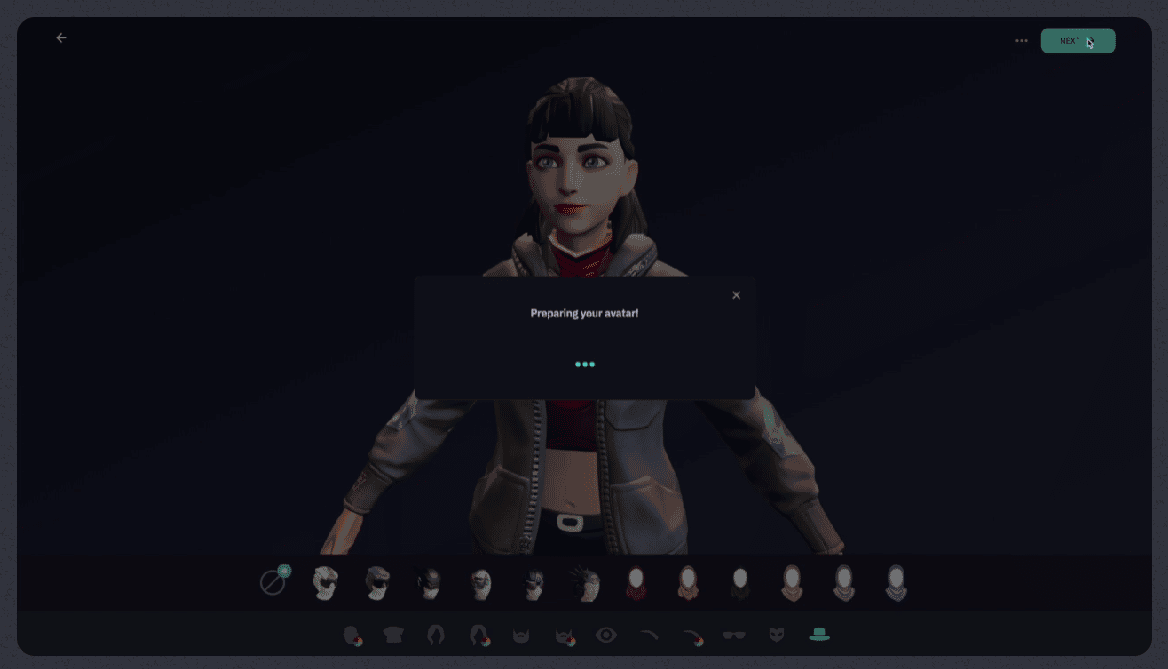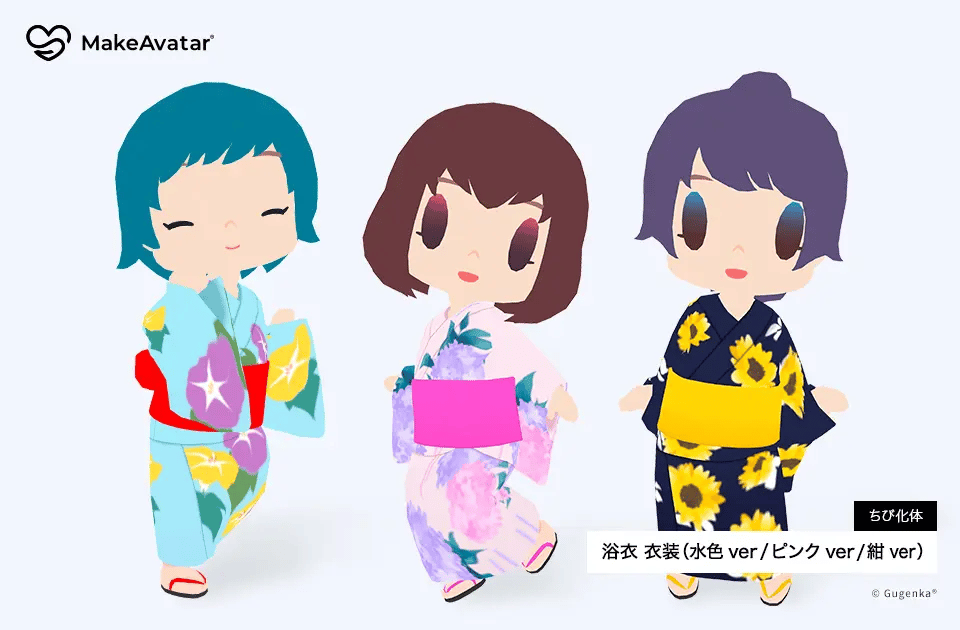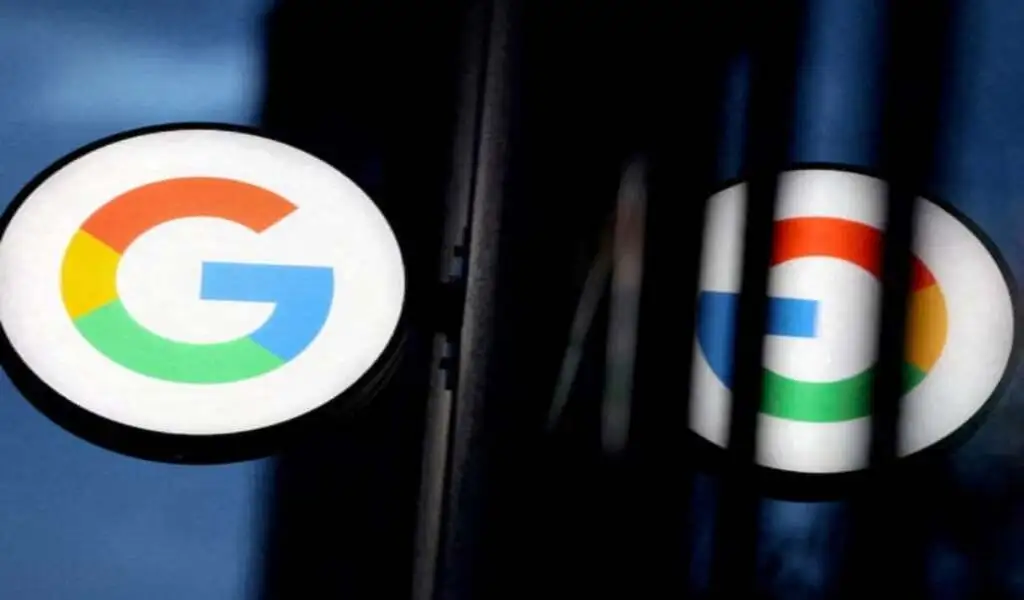Tech
Top 10 Avatar Maker to Make Free Avatars Online
A professional avatars maker is essential to every modern business looking to garner users online. Best free avatar creator tools are showcased here!
Avatar creators are absolutely essential to modern online businesses, whether for social engagement or user loyalty.
Your virtual business representatives must be designed to attract specific user segments, and they can be highly effective if you build or create them using the right tools.
Unless you’re ready to play with the best, your business might not have the opportunity to overcome the competition.
Here are the best avatar-maker tools to give you a virtual boost when creating user personas and other essential business and marketing assets.
ZEGOCLOUD
With Artificial Intelligence (AI) now achieving monumental milestones, it’s about time businesses expected a return on their investment (ROI) from AI initiatives.
Avatar creators are the perfect conduit for investments because they can create realistic virtual characters that captivate the imaginations of your users and attract them to your business.
Real characters that bring real results to your bottom line. ZEGOCLOUD offers an avatar maker free of cost that you can later upgrade once you’re happy with the initial results.
Powered by AI, ZEGOCLOUD leverages the power of facial recognition, facial expression mirroring, speech and gesture simulation, and body pose recognition to deliver exactly.
what your business needs to create a compelling sales environment for your target audience in the metaverse.
From interest to engagement to conversion – ZEGOCLOUD has your back the entire way.
Why depend on archaic solutions when the best of AI avatar creators is by your side? Get light years ahead of the competition – the metaverse is coming!
To note, it generally takes a complicated learning curve, which every developer has to implement but with ZEGOCLOUD, that’s a thing of the past!
Avatar SDK
Avatar SDK is used by some of the world’s top companies. It’s a relatively simple tool at the front end.
How simple? Well, most of the time, all you need is a Selfie, and the software will create a realistic 3D avatar just using that as input!
That’s all you need – one photo and your life-like avatar is ready to hit the metaverse – with all the bells and whistles you want it to have.
You can test the product with a two-week free trial, for which you’ll need to register on the website and add a payment method.
You won’t be charged until the free trial period is over, which is similar to what most SaaS products charge their customers.
There are a few different plans you can opt for based on what you need.
For instance, the Plus subscription is ideal for headshot avatars (bust with a hairstyle that’s captured from the photo you upload); for full MetaPerson, you’ll need the Pro plan.
Try both and see what works for you, and then you can upgrade to the appropriate plan at the end of your trial period.
Ready Player

ReadyPlayer.me is a sophisticated platform that caters to developers and technology enthusiasts.
It offers several avatar creation options, including the choice to buy NFTs that your avatar can sport!
You can choose from a ton of pre-created avatars or just use a selfie photo, then customize your avatar to give it all the bells and whistles you need.
The best part about using this particular avatar maker platform is the export options and usability.
These avatars can be used in over 3500 games and apps, making it a true utility that’s metaverse-ready.
Although it’s primarily for developers, the interface is user-friendly enough for anyone who is familiar with such tools or has a keen urge to learn the ropes. It’s not hard, but it can be a lot of fun!
Animaze

Animaze avatars and creations work on a number of gaming and other platforms including Twitch, Discord, and even Zoom!
It can be used to create realistic characters or avatar personalities that really pop.
It comes with several customization options such as the ability to choose from various hair colors, clothes, and even emotes.
The output file can then be carried over to your platform of choice for upload.
The best feature here is not just the customization capabilities but the ability to import from other platforms like Ready Player Me.
Extensive options for apparel, hair, headgear, etc. are available to optimize these imports, and it’s easy to access since it’s available for desktop as well as mobile.
You don’t have to be a professional designer because the UI is very user-friendly, which makes it ideal for low-budget situations where entrepreneurs are bootstrapping their businesses.
There’s even a 100% free plan that comes with over 80 avatars!
Tafi

Tafi, or Make Tafi, is designed for 3D avatar creation by leveraging Web3 tech that is advanced, intuitive, and platform-agnostic.
The brand is tied up with several key partnerships in the NFT space, making it an ideal metaverse utility to grow your brand with.
The platform supports everything from simple 3D artwork to elaborate virtual reality environments that can be used to streamline your marketing strategies for younger, tech-savvy audiences.
You can plug this app into whatever game you’re designing and use it to create avatars or NFTs and monetize them on your own platform.
No matter where you go – desktop, mobile, or VR/AR, Tafi’s right there with you to support the creation of ultimate avatars that are rich and realistic.
In addition, you’ll be plugged into a creative community of thousands of artists and developers who think like you.
Supports VRChat, Samsung, Daz, Unity, and other major gaming and metaverse platforms. Flexible. Smart. Affordable.
MakeAvatar

MakeAvatar is a marketplace app suggested by VRChat.
You can create a wide range of 2D avatars in manga style and even buy custom outfits and other accessories to deck them up!
It’s not as advanced as some of the other platforms we’ve showcased but since it has VRChat as a major supported platform, it can be useful when crafting a marketing strategy for that niche audience.
You can link this tool with VRChat and several other platforms so your creations can be used there directly without any compatibility issues and other glitches that are typical of moving avatars between platforms.
However, that flexibility is a tad limited at the moment since the site only lists a handful of collaborative platforms you can link to.
However, it does come with a range of Holo Models from various genres like Anime that you can instantly start using after you finish your customizations.
IN3D
IN3D is a flexible avatar maker or avatar creator that’s advanced and easy to use.
You can integrated it with your own product or just use in inside the app itself. Regardless, the quality of 3D avatars is truly stunning, and the method itself is very simple.
All you need is a camera phone and the app or SDK/API and you’re good to go!
The way it works is that you scan a subject (or yourself, with the help of someone) with a full 360-degree view and then let the app do its magic.
In minutes, you can create a realistic 3D avatar that you can add to any metaverse environment.
It even comes with FBX, GLB, or USDZ export capabilities, and the SDK for Unity and Unreal Engine allow you to create the avatar in the IN3D app and simply copy-paste the creation to the background and surroundings that you created.
Union Avatars

This is essentially a full-body avatar creator that works in virtually any environment (pardon the pun!)
One solitary selfie photo is all you need to get started, and using that as your springboard, you can instantly create an avatar that can be used in-game, in VR/AR applications, or – you guessed it – the metaverse!
The platform uses something called the UnionID to unify your assets and carry them wherever you go, whether it’s a supporting game, a metaverse environment, or just a limited AR/VR scenario.
The API integration is relatively simple if you’re a developer, but don’t worry if you’re not – you can also use the native platform to craft your stunning avatars. Simplicity is the key here but the results can be astounding.
Wolf3D

Wolf3D is a highly advanced avatar creator with world-class support from top brands such as Apple’s ARKit, etc.
It comes with an SDK/API for personalized avatars that your users can create themselves using just a photo as the base.
Add to it the support for multiple platforms and what you have is a winner to take you and your users to the next level in the metaverse.
The ARKit application helps when you need realistic avatar animations, which include a full range of facial expressions to represent emotions and states of mind.
As Madonna says “Express Yourself!”, but do it in 3D animation – and with style!
With Wolf3D, you have the option of bust-only avatars or full-body avatars depending on what you need for a particular platform.
And in that respect, don’t worry because your creations are fully compatible with almost any virtual platform you might have in mind.
Pinscreen

Do you need an avatar to interact virtually with your customers? Then this is the platform for it.
The Avatar SDK from Pinscreen lets you create custom personalities that you can introduce to your applications and games.
As with most of these tools showcased here, one single selfie or photo is all you need to get started.
The AI-based avatar creator will then render that in realistic 3D with numerous and intricate customization options.
This tool also comes as an iOS app that lets you create life-like avatars on the go and use them anywhere.
It includes face tracking tech to give you realistic characters that are styled based on – YOU!
This unique cloud-based platform is especially known for its ability to create virtual assistants that are fully integrated with speech synthesis and voice recognition technology pulsing powerfully under the hood.
It’s great for ecommerce applications, games, and anywhere you need an interactive character to replace a live person.
Related CTN News:
Proxies for Social Networks. What are They for and Which Ones to Use?
Tech
US: A Judge Mandates that Google Allow Competing App Stores to Access Android

(VOR News) – The ruling is that Google, the greatest technology firm in the world, is required to make its Android smartphone operating system available to merchants that supply applications that are in direct rivalry with Google’s. This decision was reached by a judge in the United States of America.
The Android Play store, which is owned and operated by Google, was found to be an example of an illegal monopoly arrangement by a jury in the state of California on Monday. The finding was reached by a jury. Monday is the day that this decision was come to.
An earlier federal judge ruled Google’s search engine illegal.
This finding, which came after that decision, has forced the company to suffer yet another setback. As a result of the corporation having already encountered its initial obstacle, this decision has been established. This particular decision was made by the judge during the month of August, when the month was in progress.
In light of the fact that the decision was made, what exactly does it mean that the choice was accepted?
In accordance with the verdict, Google is obligated to make it possible for users to download Android app stores that are offered by third-party competitors. For a period of three years, the corporation is prohibited from imposing restrictions on the usage of payment mechanisms that are integrated into the application.
In addition, it is important to keep in mind that Google does not possess the right to impose restrictions on the utilization of ways to make payments online.
Additionally, the verdict makes it unlawful for Google to give money to manufacturers of smartphones in order to preinstall its app store. Smartphone manufacturers are prohibited from doing so.
Furthermore, it prevents Google from the possibility of sharing the revenue that is generated by the Play store with other companies that are in the industry of delivering mobile applications.
In addition to this, the court has mandated the establishment of a technical committee that will be made up of three different people chosen at random.
The committee will be responsible for monitoring the implementation of the reforms and finding solutions to any disagreements that may occur as a consequence of the implementation of the reforms while they are being implemented. This task will fall under the committee’s purview so that it may fulfill its duties.
However, certain components were allowed to be put into action until July 1st, despite the fact that the judge’s statement suggested that the ruling would take effect on November 1st. The statement was the basis for the ruling, which ultimately became effective.
Particularly, I wanted to know what Google’s reaction would be.
There is a fact that Google does not adhere to this directive, which has been brought to their attention. This document argued that the alterations that the judge had ordered to be made would “cause a range of unintended consequences that will harm American consumers, developers, and device makers.”
The judge had ordered the modifications to be implemented. The alterations were to be carried out as indicated by the judge’s ruling. The judge made it clear that he expected these revisions to be carried out in accordance with his guidance.
The company’s regulatory affairs vice president, Lee-Anne Mulholland, provided the following statement: “We look forward to continuing to make our case on appeal, and we will continue to advocate for what is best for developers, device manufacturers, and the billions of Android users around the world.”
On average, over seventy percent of the total market for smartphones and other mobile devices is comprised of mobile devices that are powered by the Android operating system. Both smartphones and other small mobile devices are included in this category.
In the event that the Play app store continues to be shown on the home page and that other Google applications are pre-installed prior to the installation of the Android application, smartphone manufacturers are entitled to install the Android application at no cost at their discretion.
Additionally, the Android application can be installed on devices that are manufactured for smartphones.
SOURCE: DWN
SEE ALSO:
Over The Planned “Link Tax” Bill, Google Threatens to Remove NZ News Links.
Tech
WhatsApp Now Features a “Mention” Tool for Status Updates and Stories.

(VOR News) – Those who use WhatsApp now have the ability to mention other people in their stories or status updates as a consequence of a feature that was only recently enabled on the platform.
Previous to this point, this capability was not available. It wasn’t until quite recently that this capability became available to the public.
According to the information that was provided by the company, users now have the opportunity to tag close friends in their stories, and the person who is mentioned will have the option to go back and re-share an earlier version of that story. This information was provided by the company. The corporation was kind enough to reveal this information to us.
Because of a new feature that has been added to the WhatsApp app, users now have the opportunity to like individual stories and status updates.
This capability was previously unavailable to WhatsApp users.
A significant amount of progress has been made in this context. Alternative readers now have the chance to “like” a work, which is comparable to liking a post on Facebook. This feature was introduced in recent years. When compared to the past, this is a tremendous shift.
At one point in time, viewers were only permitted to observe the total number of views that a particular story had gotten. These restrictions were eliminated in later versions of the software.
Additionally, it is essential that the likes and reactions to a story be kept anonymous during the entire process. One of the factors that contributes to the general mystery that surrounds this characteristic is the fact that this is one of the elements.
The person who brought it to the attention of others is the only person who will be able to judge who enjoyed it and who did not care about it. These individuals will be able to make this determination.
A notification will be issued to the individual who was referenced earlier in the sentence and who was named in the story or status update that was discussed. A notification of this nature will be sent to the individual via WhatsApp.
This message will be sent to the user in question whenever that person makes a reference to another person while they are in the process of elaborating on a narrative or updating their status. You will receive a notification alerting you that you have been tagged in the narrative.
This notification will be delivered to the person who receives this message. In addition, students will be provided with the opportunity to re-share the tale for themselves.
It is important to note that if the names of individuals who have been referenced in a narrative or a status update are included in any of these, then the names of those individuals will not be accessible to any third party through any of these. In light of the fact that the identities of those individuals will be concealed from public disclosure, this is the condition that will be required.
While WhatsApp recently made the announcement that it will be incorporating this functionality, it is highly likely that not all users will have access to it at the same time.
This is despite the fact that WhatsApp recently made this announcement.
Despite the fact that WhatsApp has only recently made a public announcement that it will move forward with the deployment, this is the situation that has presented itself.
As soon as a short period of time has elapsed, access will be made available to each and every person on the entire world.
Additionally, WhatsApp has hinted that new functionalities might be introduced to the status and updates tab in the future months.
The purpose of these capabilities is to provide users with assistance in maintaining healthy connections with the individuals who play a vital role in their living experiences. This is done in order to give users with support in maintaining close relationships with the folks who are the subject of the inquiry.
It is with the purpose of supporting users in successfully keeping close ties with the individuals in question that this step is taken.
SOURCE: DN
SEE ALSO:
Over The Planned “Link Tax” Bill, Google Threatens to Remove NZ News Links.
Accenture and NVIDIA Collaborate to Enhance AI Implementation.
Tech
Over The Planned “Link Tax” Bill, Google Threatens to Remove NZ News Links.

(VOR News) – Google has sent a strong message to the New Zealand government, threatening to stop boosting local news content should the Fair Digital News Bargaining Bill become law.
The law, put up by the Labour government and backed by the coalition in power at the moment, mandates that digital companies such as Google pay back news organizations for links to their material.
News publishers, on the other hand, charge the tech giant with “corporate bullying.”
Google says this measure may have unanticipated effects.
Google New Zealand’s country director, Caroline Rainsford, voiced her worries that the law, which is being referred to as a “link tax,” is not doing enough to support the media industry in New Zealand right now.
She underlined that Google would have to make major adjustments if the previously mentioned law were to pass, including cutting off links to news articles from its Search, News, and Discover platforms and cutting off financial ties with regional publications.
According to Rainsford, similar legislation has been proposed and approved in other nations including Australia and Canada, but it has not been proven to be effective there and breaches the principles of the open web.
She drew attention to the fact that smaller media outlets will be most negatively impacted, which will limit their capacity to reach prospective audiences.
Google says its alternative options will protect smaller, local media from negative effects.
Conversely, it conveys apprehension regarding the possible fiscal obligations and vagueness of the legislation, which it feels generates an intolerable level of ambiguity for enterprises functioning within New Zealand.
The New Zealand News Publishers Association (NPA) has reacted to Google’s warnings by alleging that the internet behemoth is using coercive tactics.
They specifically contend that the need for regulation stems from the market distortion that Google and other tech giants have created, which has fueled their expansion into some of the most significant corporations in global history.
The legislation aims to create a more equal framework that media businesses can use to negotiate commercial relationships with technological platforms that profit from their content.
New Zealand Media Editors CEO Michael Boggs stated that he was in favor of the bill, citing the fact that Google now makes a substantial profit from material created by regional publications.
He also emphasized that the use of artificial intelligence by Google—which frequently makes references to news articles without giving credit to the original sources—highlights the significance of enacting legislation.
Paul Goldsmith, the Minister of Media and Communications, has stated that the government is now evaluating various viewpoints and is still in the consultation phase.
He stated that the government and Google have been having continuous talks and will keep up these ongoing discussions.
However, not all political parties accept the validity of the Act.
The ACT Party’s leader, David Seymour, has voiced his displeasure of the proposal, saying that Google is a game the government is “playing chicken” with. He threatened the smaller media companies, saying that they would suffer from worse search engine rankings if the internet giant followed through on its promises.
Seymour contended that it is not the government’s responsibility to shield companies from shifts in the market brought about by consumer preferences.
The things that have happened in other nations are similar to what has happened in New Zealand.
Google has agreements with a number of Australian media firms that are in compliance with its News Media Bargaining Code. These agreements contain provisions that permit an annual cancellation of these agreements.
Due to the government’s decision to exempt Google from the Online News Act, the company has committed to supporting news dissemination by contributing annually to the Canadian journalistic community.
The New Zealand measure is consistent with global approaches aimed at regulating the relationships that exist between technology corporations and media organizations.
It’s hard to say what will happen with the Fair Digital News Bargaining Bill as the discussion goes on. Google and the New Zealand media landscape are preparing for what might be a protracted legal battle.
SOURCE: TET
SEE ALSO:
Accenture and NVIDIA Collaborate to Enhance AI Implementation.
-

 News3 years ago
News3 years agoLet’s Know About Ultra High Net Worth Individual
-
Entertainment2 years ago
Mabelle Prior: The Voice of Hope, Resilience, and Diversity Inspiring Generations
-

 Health3 years ago
Health3 years agoHow Much Ivermectin Should You Take?
-

 Tech2 years ago
Tech2 years agoTop Forex Brokers of 2023: Reviews and Analysis for Successful Trading
-

 Lifestyles2 years ago
Lifestyles2 years agoAries Soulmate Signs
-

 Movies2 years ago
Movies2 years agoWhat Should I Do If Disney Plus Keeps Logging Me Out of TV?
-

 Health3 years ago
Health3 years agoCan I Buy Ivermectin Without A Prescription in the USA?
-

 Learning2 years ago
Learning2 years agoVirtual Numbers: What Are They For?
